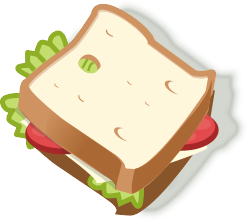The US Government recommendations for better health arise from research findings. A systematic review of literature helps form guidelines on diet and exercise that the public can adopt for better health. Learn the recommendations.
I just finished a free online course titled Nutrition and Physical Activity for Health offered through Coursera.org by the University of Pittsburgh. It was a six-week course with two modules to finish each week.
Although I was a bit behind by a week, I tried to keep up with the reading assignments and quizzes to complete the 11-module course. An optional forum is provided to give feedback on the course or interact on posts written by fellow students or courserians who come from various parts of the world. I learned there were 70,000 of us who joined since the online course’s commencement on July 15, 2013.
What I really appreciate about this course is its science-based approach to health. For every recommended physical activity or diet, there is a corresponding research to back it up. A comprehensive review of research literature point out findings that support diet or physical exercise recommendations.
Here is a summary of what I have learned from the course.
Diet and exercise approach for better health
If you intend to manage your weight and reduce the risk of getting chronic, diet-related diseases like cardiovascular disease (CVD), cancer, stroke, and diabetes, then the best approach should be to implement both a diet and exercise program. Much will be gained from having a balanced diet and more could be achieved if this is coupled with regular exercise.
What is the recommended diet?

To maximize the benefits of diet, it is important that you should be able to track down your energy or food intakes each day. You should list down how much and what kinds of food you ate. This requires counting the calories derived from food. This simple daily record will give you an insight on the kind and amount of food in terms of calories that will help you manage your diet.
All of the food consumed do not get burned for energy. The body will use up only a specific amount of calories to carry on the daily activities. The rest gets either excreted as waste or stored as fat. You should be concerned about overeating because if you take more than enough, the excess gives that added weight unless you do something to get rid of it. It is here that exercise plays a role.
There are a specific amount of calories needed for maintenance of body weight for the different food groups namely carbohydrates, proteins, and fats. The same goes for optimal quantities of vitamins and minerals to help absorb and regulate food in the body.
The whole point is that you should first understand your diet through consistent monitoring and from there design a diet that will give you just enough amount and kind of food required for weight maintenance. This means more of fibrous food and less of trans and saturated fats which are obtained easily from food.
What is the recommended amount of exercise?
The recommended amount of exercise to maintain weight is at least 150 minutes (2.5 hours) of moderate exercise per week. Ideally, this should be spread at a minimum of three times a week or better still, four to five times a week. This means at least 50 minutes of exercise if you opt for a three times a week exercise program or 30 minutes per session if you decide to exercise five times a week.
According to studies, more exercise is better. For best results, 250 minutes of moderate exercise per week is recommended. My exercise program is just okay as I do 41 to 44 minutes of vigorous exercise, that is, running a six kilometer distance three times a week. I just need to adjust my calorie intakes because my weight is between obese and normal based on a body mass index (BMI) of 25.9.
If you want to learn more about the health benefits of exercise, download the 2008 Physical Guidelines for Americans.
To measure the amount of calorie intake based on your food as well as your progress in your physical activity, use free online tool to track an individual’s diet and physical activity.
© 2013 September 2 P. A. Regoniel

